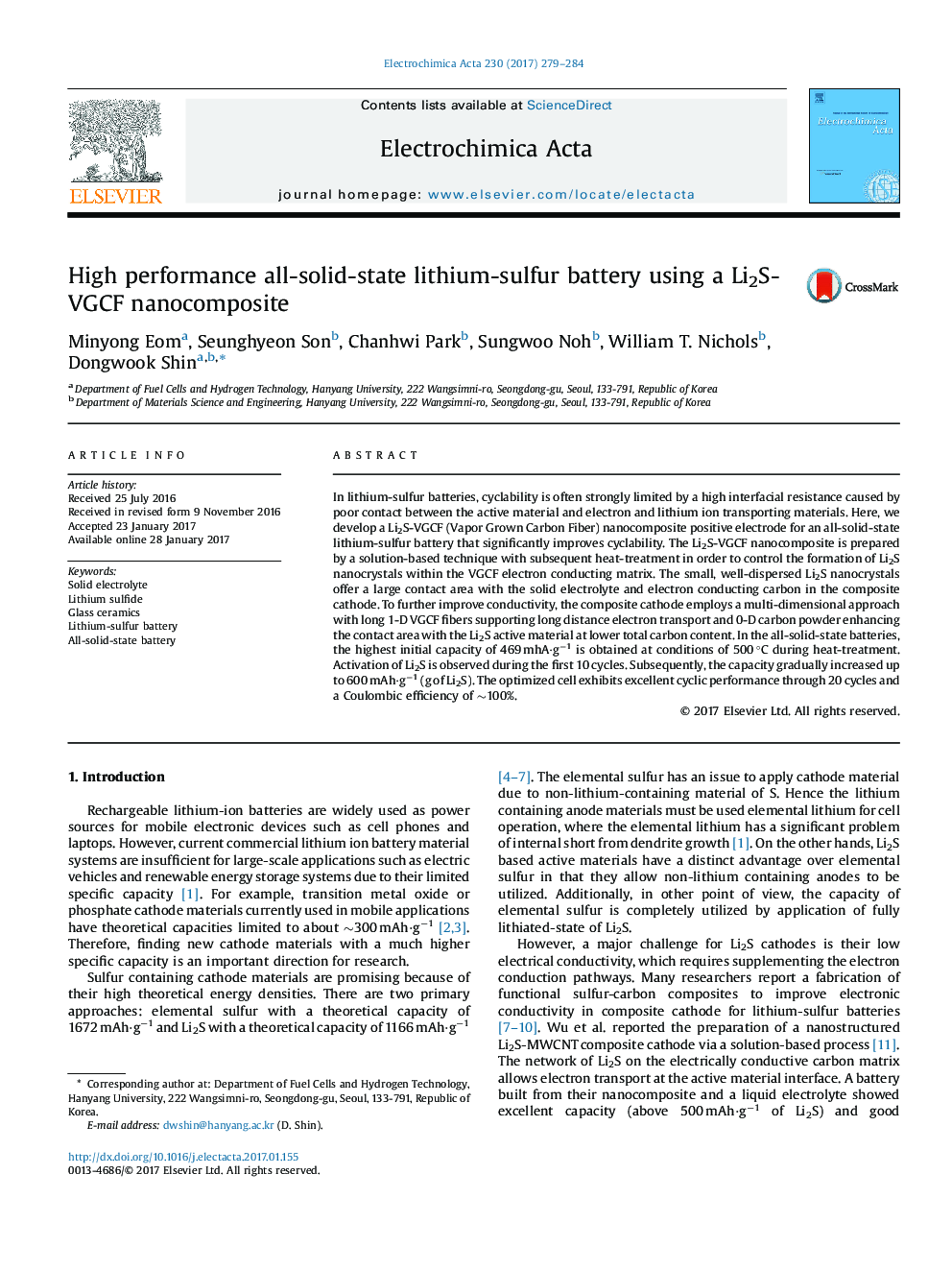| Article ID | Journal | Published Year | Pages | File Type |
|---|---|---|---|---|
| 6471383 | Electrochimica Acta | 2017 | 6 Pages |
In lithium-sulfur batteries, cyclability is often strongly limited by a high interfacial resistance caused by poor contact between the active material and electron and lithium ion transporting materials. Here, we develop a Li2S-VGCF (Vapor Grown Carbon Fiber) nanocomposite positive electrode for an all-solid-state lithium-sulfur battery that significantly improves cyclability. The Li2S-VGCF nanocomposite is prepared by a solution-based technique with subsequent heat-treatment in order to control the formation of Li2S nanocrystals within the VGCF electron conducting matrix. The small, well-dispersed Li2S nanocrystals offer a large contact area with the solid electrolyte and electron conducting carbon in the composite cathode. To further improve conductivity, the composite cathode employs a multi-dimensional approach with long 1-D VGCF fibers supporting long distance electron transport and 0-D carbon powder enhancing the contact area with the Li2S active material at lower total carbon content. In the all-solid-state batteries, the highest initial capacity of 469 mhAâgâ1 is obtained at conditions of 500 °C during heat-treatment. Activation of Li2S is observed during the first 10 cycles. Subsequently, the capacity gradually increased up to 600 mAhâgâ1 (g of Li2S). The optimized cell exhibits excellent cyclic performance through 20 cycles and a Coulombic efficiency of â¼100%.
